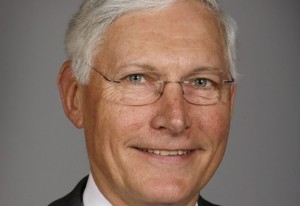Representative Vander Linden Weekly Update
February 4th, 2016
The 2016 Legislative Session is fully underway. Below you will find information about the most recent happenings here at the Capitol. If you have any questions, I encourage you to contact me for information.
The Tax Coupling Bill
The tax coupling bill has an impact on the FY 2016 ending balance and the FY 2017 on-going revenue levels. Any agreement will impact discussions on school aid and budget targets.
The Governor has already recommended a plan for coupling that has a negligible effect on FY 2016 revenue while adding an additional $48.5 million to FY 2017.
One thing that can change the level of the state’s ending balance and the amount of on-going General Fund revenue is the coupling bill. The coupling bill updates Iowa law to conform to certain tax changes enacted by Congress. It is always important that this bill is passed quickly as tax preparers and accountants need to know what deductions Iowans can take on their 2015 income taxes.
The Governor’s plan is to not couple at all for tax year 2015. That means that taxpayers would not be able to take advantage of any of the tax extenders Congress just passed that have an Iowa component when they do their taxes this April.
The Governor then recommends permanently coupling with the IRC in tax year 2016 with the exception of Section 179 expensing or bonus depreciation. The Governor’s plan permanently leaves out those provisions. Section 179 expensing is an accelerated depreciation mechanism for business purposes and bonus depreciation is something similar to that except for larger expenses. The Governor’s recommended coupling provisions are estimated to have a negligible impact on FY 2016 General Fund revenues while increasing FY 2017 General Fund revenues by $49.2 million.
The House approved a different plan on Thursday, Jan. 28. The House plan couples with everything except bonus depreciation in tax year 2015. It also does not add the permanency of the Governor’s plan. There is a $95.7 million impact on FY 2016 revenue/ending balance. That money goes directly to taxpayers. Additionally, $86.5 million is added to FY 2017 on-going revenue with roughly $55 million of that available for appropriation under the state’s expenditure limitation law.
Senate Democrats have given no indication on their plan for tax coupling which complicates and slows down the budget process this session.
Senate Democrat’s Budget Targets
Senate Democrat’s released budget targets which spend about $70 million more than the state collects in on-going revenue. As a percentage, they spend 101.1% of on-going revenue.
Senate Democrats did not release their plans on Medicaid savings or tax coupling or even a simple balance sheet which makes it difficult to see a complete picture of their spending plans.
As part of their targets they propose an early retirement plan that “saves” taxpayers $10.6 million. House Republicans are extremely skeptical that is a reliable number. Last session Senate Democrats proposed a similar plan which resulted in zero savings. It was rejected by House GOP budget negotiators.
Senate Democrats are proposing a 4% increase in Supplemental State Aid for schools but the money necessary to fund that 4% increase is not included in their budget targets. To fund 4% they need to provide an additional $65.8 million in spending within the target for the Standings Bill. But only $2.9 million more is provided.
That means either they have cut another area included in the Standings Bill – such as property tax credits – or they are willfully underfunding their 4% SSA increase and instead forcing property taxpayers to pay more to make up for their lack of funding.
Senate Democrats’ Proposed Supplemental
Spending Bill
The largest portion of the additional spending sought by majority Democrats is in Medicaid, where they are proposing an increase of $80 million. This is $13 million more than what Governor Branstad has requested. But the Senate Democrats’ FY 2017 budget target for the Health and Human Services budget is $13 million lower than the Governor’s proposal. This likely means that the FY 17 target was lowered and the FY 16 supplemental increased so that FY 2017 funds could be shifted to other budget areas.
It appears the Senate Democrats have two goals in addition to what was mentioned above. 1) They want to increase the amount of money in the RIIF for FY 2017. 2) They want to permanently increase the amount of on-going revenue in the General Fund.
They make permanent changes to the General Fund and RIIF. After all reserve funds are filled each year, the next $30 million in the ending balance is deposited in RIIF for use the next fiscal year. Begins in FY 2017.
After bond payments and the transfer to the Skilled Worker Fund, the next $25 million of gaming tax revenue is deposited in the General Fund. Begins in FY 2017.
















